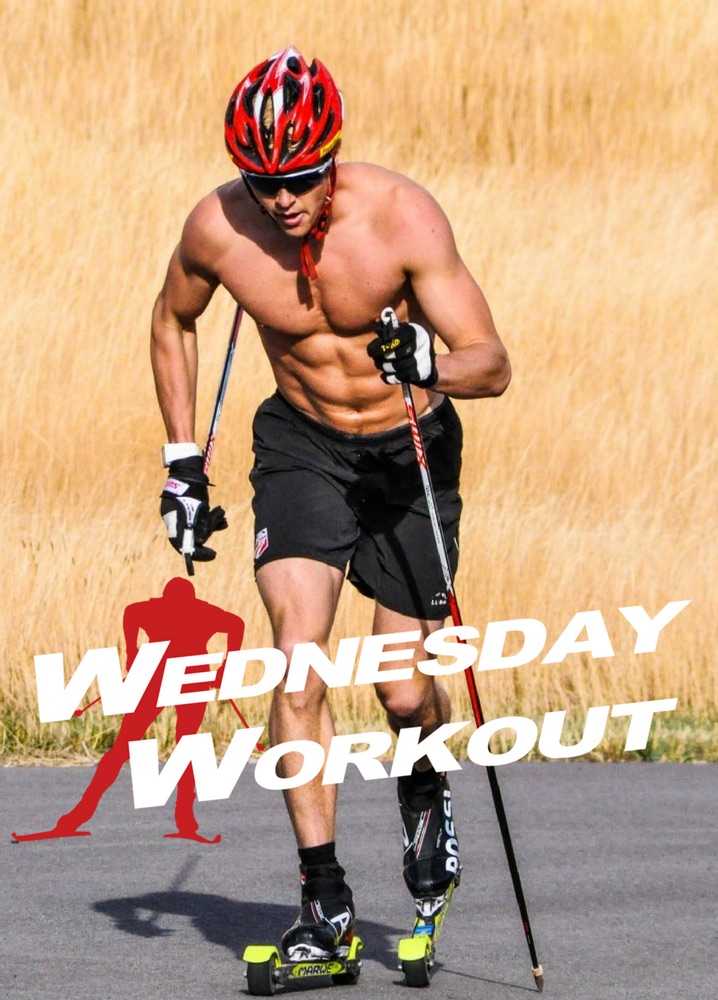
This isn’t Erik Bjornsen’s first rodeo. The 26-year-old Washington native was named to the U.S. Ski Team six years ago, and since then he’s made his way from the development or “D” team ranks to the big leagues — spending the bulk of each winter racing overseas in Europe on the World Cup.

And at 6-foot-2 and roughly 175 pounds, according to his U.S. Ski Team bio, Bjornsen is one of the bigger skiers on the circuit, a fact he’s come to realize as the years go on.
As you’ll learn in an upcoming Nordic Nation podcast episode, Bjornsen once thought the Russians, whom he’d watched race on T.V. as a youngster, were the titans of the pack. It turns out that television does wonders for certain athletes’ apparent as compared to their absolute buffness.
And as big-time functional ski strength becomes a huge component to World Cup success, Erik Bjornsen (intentionally or not) is buffing up. Why not use his size to his advantage by developing more powerful and efficient double poling?
Bjornsen shared the following double-pole-centric workout. And word on the Anchorage streets, where he spends his summer training with Alaska Pacific University, is that Bjornsen’s feeling strong as he prepares for racing in Europe later this month.
The Workout: Solo, high-focus, double-pole distance session
Find suitable terrain and timing: “I choose the terrain based on how hard I want the workout to be. I try to fit this workout in mid-week between intervals sessions,” he wrote in an email. “The point is to get the biggest benefit without fatiguing the body too much.
“Most often I head up Campbell airstrip road. It’s a five-mile-long road, with a majority of the terrain measuring out at a gentle 5% incline,” Bjornsen continued. “There’s one steeper climb in the middle that’s about 500 meters long. For this workout, I go out and back twice.”
Warmup: 15-minute easy Level 1 (roller)ski to the start.
Go-time: Typically takes him 1 hour and 20 minutes to rollerski the 5-mile section twice.
“The steep 500-meter section is VERY hard to double pole — that portion of the road is something you would for sure stride in a race. During this workout, I try to spend an hour at L2 [Level 2] and end up bumping up to L3 [Level 3] only when double poling up that steep segment (2 X 5min in L3). I like having the two short but demanding double pole sections in this workout.
“The important part of this training session is not the 2 x 5-minute L3 sections, it’s the time before and after that L3 effort. You have to figure out how to get the muscles to recover from the hill while still double poling and determine what gear/tempo to use while still applying power efficiently — and recover at the same time.”
Cool down: 15-minute easy ski home.
Notes:
- “The idea is to work specifically on double pole and upper body strength. You get an opportunity to work on all gears, from long double pole to very quick choppy double pole up the steep section.
- “You can gain a lot from just focusing on two intensity sessions a week throughout the summer. This is a way I find I’m able to gain quite a bit from specific double pole training. But ideally, you don’t fatigue the body so much that it takes energy away from the true intensity sessions.”
Jason Albert
Jason lives in Bend, Ore., and can often be seen chasing his two boys around town. He’s a self-proclaimed audio geek. That all started back in the early 1990s when he convinced a naive public radio editor he should report a story from Alaska’s, Ruth Gorge. Now, Jason’s common companion is his field-recording gear.



